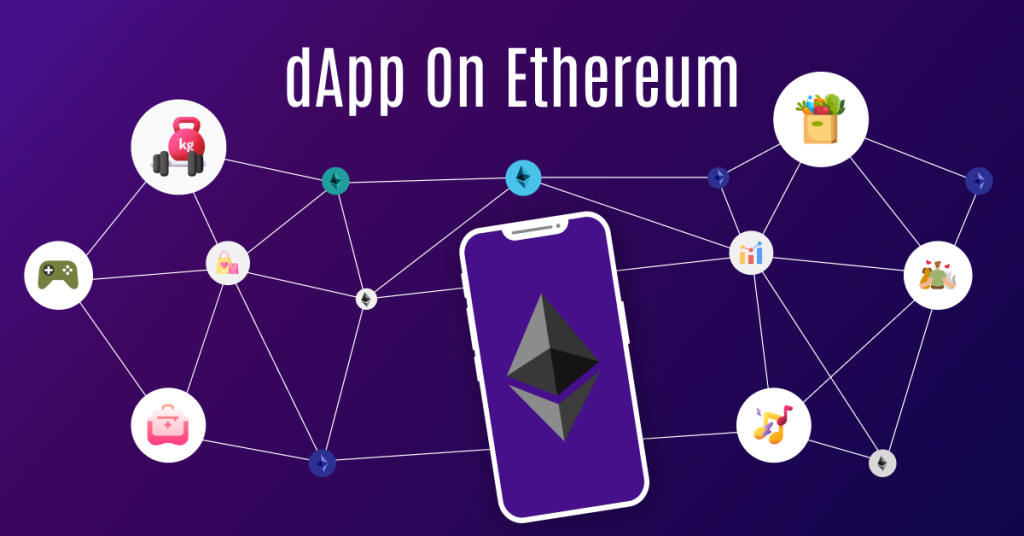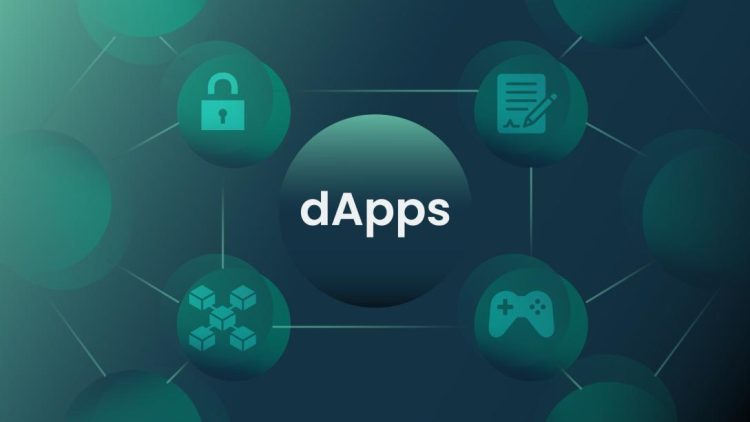Decentralized applications (DApps) have emerged as a transformative force in the world of blockchain technology. Unlike traditional applications that rely on centralized servers, DApps operate on decentralized networks, ensuring greater user autonomy, transparency, and security. This structure makes DApps particularly appealing for a wide range of industries, including finance (DeFi), gaming, supply chain management, and more.
However, while decentralization offers many benefits, it also presents unique challenges, particularly in the areas of security and user trust. Users need to be assured that their data and transactions are secure, their privacy is protected, and that they can trust the application to function correctly without relying on a central authority.
This article explores how DApps ensure user security and trust, examining the underlying technology, security protocols, and user-centric mechanisms that make decentralized applications reliable and safe.
1. The Role of Blockchain in Ensuring Security
At the heart of any DApp is the blockchain, which provides a secure and immutable ledger for transactions. Blockchains like Ethereum, Binance Smart Chain, and Solana use decentralized networks of nodes to validate transactions, ensuring that no single party controls the data.
Security Features of Blockchain for DApps:
- Immutability: Blockchain transactions are immutable once confirmed. Once data is recorded on the blockchain, it cannot be altered or deleted without the consensus of the majority of the network. This ensures that user interactions, such as financial transactions or contract executions, cannot be tampered with or manipulated, providing a level of security that centralized applications cannot match.
- Transparency: All transactions on a blockchain are publicly available and can be audited by anyone. This transparency allows users to verify the legitimacy of actions within a DApp, ensuring that no malicious activities are being hidden or manipulated behind closed doors.
- Decentralization: Since the blockchain is decentralized, there is no central authority that can be compromised. DApps operate on peer-to-peer networks, where each node stores a copy of the ledger, making it nearly impossible for a single party to gain control over the network. This decentralization ensures that DApps are less susceptible to hacking, censorship, or central points of failure.
2. Smart Contract Security
Smart contracts are self-executing programs that run on blockchain platforms, enabling DApps to function autonomously. These contracts are crucial to the operation of DApps, but they also introduce potential security vulnerabilities if not designed and implemented correctly.
Ensuring Secure Smart Contracts:
- Code Audits and Formal Verification: Smart contracts can contain vulnerabilities that can be exploited by attackers. To prevent this, many DApps undergo rigorous code audits and formal verification processes, where the contract’s code is reviewed and tested for vulnerabilities by third-party security experts. Tools like MythX, Slither, and ConsenSys Diligence are commonly used to perform static analysis and identify bugs or vulnerabilities in the smart contract code.
- Upgradability and Bug Fixes: While smart contracts are immutable once deployed, some DApps use upgradeable contracts or proxy patterns that allow them to fix bugs or vulnerabilities in the code without compromising the integrity of the entire DApp. This ensures that if an issue is identified post-launch, it can be addressed while preserving user data and trust.
- Time Locks and Multisignature: Some DApps use additional security mechanisms like time locks and multisignature wallets to ensure that sensitive actions (such as large transfers of funds or important updates to the smart contract) require approval from multiple parties. This prevents any single individual or malicious actor from having unilateral control over the DApp’s functions.
3. Data Privacy and User Control
One of the primary benefits of DApps is that they give users full control over their data. In traditional centralized applications, user data is stored on centralized servers controlled by a single entity. In contrast, DApps ensure that sensitive user information is stored either off-chain or in encrypted forms on the blockchain, reducing the risk of unauthorized access.
How DApps Protect User Privacy:
- Decentralized Identity (DID) Systems: DApps often integrate decentralized identity protocols, where users retain control over their identity and personal data. These systems allow users to interact with DApps without exposing their sensitive information to centralized authorities. For example, through Self-Sovereign Identity (SSI) solutions, users can verify their identity without revealing unnecessary personal data.
- End-to-End Encryption: Many DApps employ end-to-end encryption, ensuring that only the sender and recipient of the data can read it. By encrypting messages and transactions, DApps protect user data from malicious third parties or even from the developers themselves.
- Zero-Knowledge Proofs (ZKPs): Zero-knowledge proofs allow users to prove certain facts about their data without revealing the data itself. DApps utilizing ZKPs can enable users to verify their identity or transaction details without disclosing any sensitive information, offering enhanced privacy and data protection.
4. Incentive Structures and Governance for Trust
The decentralized nature of DApps means that no single party has control over the application. However, to ensure that DApps remain reliable and trustworthy, many platforms integrate mechanisms of governance and incentivization that align the interests of users, developers, and stakeholders.
Key Mechanisms for Building Trust:
- Decentralized Governance: Many DApps integrate governance models that allow users to participate in decision-making processes. By using governance tokens, users can vote on proposals such as protocol upgrades, security measures, or adjustments to the application’s functionality. This ensures that no single entity has unilateral control over the platform and that decisions are made in the best interest of the community.
- Incentives for Participation: DApps often use tokenized rewards to incentivize users to participate in network validation, content creation, or other important tasks. These incentive structures create a sense of ownership and accountability among users, as they are financially motivated to maintain the health and security of the application.
- Reputation Systems: Some DApps employ reputation or trust systems, where users can rate or review services, validators, or other participants in the ecosystem. These systems increase transparency and help users make informed decisions about which DApps or users they can trust.
5. Secure Wallet Integration and User Authentication
Since DApps do not rely on traditional user accounts and passwords, they require secure methods of authentication and wallet management. User authentication in DApps is typically performed via cryptocurrency wallets, which store users’ private keys that grant them access to their funds and interactions with the platform.
How DApps Ensure Secure Wallet Integration:
- Non-Custodial Wallets: Many DApps use non-custodial wallets, which means that users retain full control over their private keys. This ensures that users are the sole custodians of their funds and data, minimizing the risk of centralized hacks or theft. Examples of non-custodial wallets include MetaMask, Trust Wallet, and Coinbase Wallet.
- Hardware Wallet Support: DApps often integrate with hardware wallets (such as Ledger or Trezor) for added security. Hardware wallets store private keys offline, making them immune to online attacks such as phishing or malware, providing an extra layer of protection for users’ funds and personal information.
- Multifactor Authentication (MFA): For enhanced security, some DApps support multi-factor authentication (MFA) processes, which require users to verify their identity through multiple channels (e.g., a private key, biometric authentication, or a one-time code) before accessing their account or authorizing a transaction.

6. Regular Security Audits and Community Involvement
In addition to technical measures, ongoing community involvement and regular security audits play a vital role in maintaining user trust in DApps.
How Regular Audits Help Maintain Trust:
- Third-Party Audits: External audits by security firms are essential in identifying vulnerabilities in DApps. By engaging independent auditors to thoroughly test the DApp’s smart contracts, codebase, and overall security infrastructure, developers can address potential issues before they are exploited by malicious actors.
- Community Bug Bounties: Many DApps employ bug bounty programs, where they offer rewards to users or security researchers who identify vulnerabilities in the application. These programs encourage community members to act as security advocates and contribute to the app’s long-term safety.
- Transparent Communication: DApp developers can enhance user trust by maintaining open communication with the community. Regular updates about security enhancements, new features, and bug fixes allow users to stay informed and confident in the platform’s reliability.
Conclusion
DApps offer users a new paradigm of digital interaction that emphasizes transparency, autonomy, and security. By leveraging blockchain’s immutability and decentralization, implementing robust smart contract security, prioritizing user privacy, and fostering a strong, incentivized community, DApps can offer a safe and trustworthy alternative to traditional centralized applications.
However, for DApps to truly fulfill their potential, continuous efforts are required to enhance security, conduct regular audits, and adopt best practices for user protection. As the ecosystem grows, developers and users alike must remain vigilant and proactive in ensuring that decentralization not only empowers individuals but also protects them from potential risks and threats.
















































